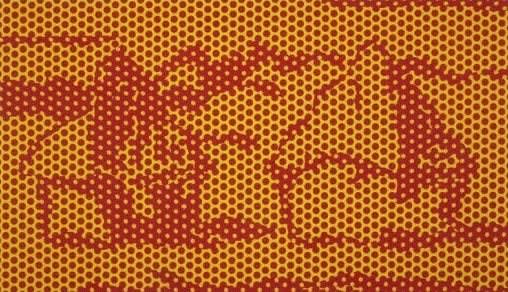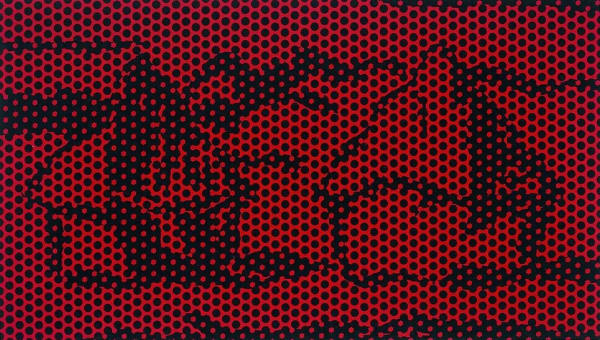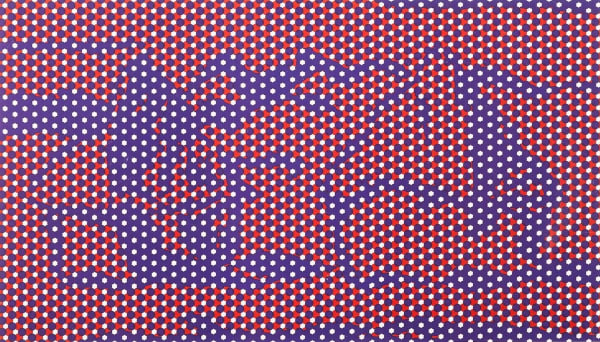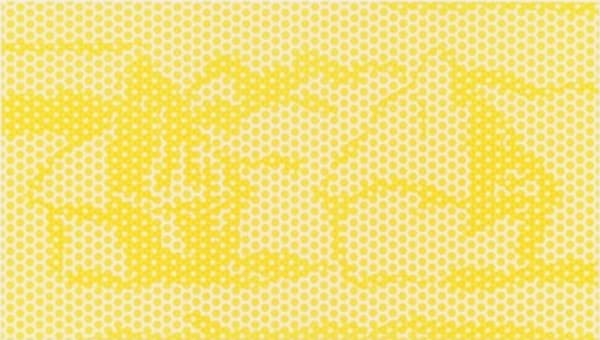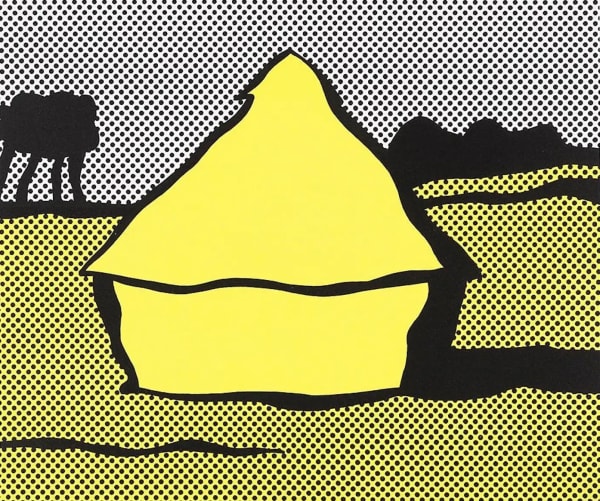-
Artworks

Roy Lichtenstein
Haystack III (C. 67), 1969Lithograph and screen print20 3/4 x 30 3/4 in
52.5 x 78.1 cmEdition of 100 plus 10 APSeries: HaystackCopyright The ArtistRoy Lichtenstein’s Haystack III (C.67) continues his Pop reinterpretation of Claude Monet’s famed Haystacks, but with an even more dramatic emphasis on the mechanization of vision. Where Monet dissolved form...Roy Lichtenstein’s Haystack III (C.67) continues his Pop reinterpretation of Claude Monet’s famed Haystacks, but with an even more dramatic emphasis on the mechanization of vision. Where Monet dissolved form into brushstrokes of shifting light and color, Lichtenstein reduces the pastoral subject to an arrangement of black and purple Ben-Day dots. The effect is striking: the familiar haystack motif emerges only faintly, almost as if seen through a screen, abstracted to the point of near-erasure.
In this work, the tension between abstraction and representation becomes especially pronounced. The eye struggles to hold onto the image of the haystacks, which appear submerged beneath a rigid, industrialized grid. What Monet achieved through the play of atmospheric light across time, Lichtenstein replaces with the repetitive hum of the printing process—a commentary on how mechanical reproduction replaces personal vision in the modern era.
Haystack III also sharpens the irony in Lichtenstein’s project. By borrowing a canonical Impressionist subject but filtering it through Pop Art’s visual vocabulary, he both pays homage to Monet’s innovation and critiques the way art history itself is consumed, reproduced, and flattened into images. The pastoral calm of the French countryside becomes reimagined as a patterned surface, where nature is subsumed into mass media aesthetics.
The choice of a limited palette—purple, black, and white—adds to the sense of detachment. Instead of Monet’s radiant spectrum, Lichtenstein opts for stark contrasts that emphasize the artificiality of reproduction. This move underlines Pop’s central question: when art is mediated through the language of advertising and print, does the image retain its original aura, or does it transform into something entirely new?
In Haystack III, the answer leans toward transformation. It is no longer about haystacks or rural life but about perception, process, and the coded structures of vision in the 20th century.
For more information or to buy Haystack III (C. 67) by Roy Lichtenstein, contact our galleries using the form below.%3Cdiv%20class%3D%22artist%22%3ERoy%20Lichtenstein%3C/div%3E%3Cdiv%20class%3D%22title_and_year%22%3E%3Cspan%20class%3D%22title_and_year_title%22%3EHaystack%20III%20%20%28C.%2067%29%3C/span%3E%2C%20%3Cspan%20class%3D%22title_and_year_year%22%3E1969%3C/span%3E%3C/div%3E%3Cdiv%20class%3D%22medium%22%3ELithograph%20and%20screen%20print%20%3C/div%3E%3Cdiv%20class%3D%22dimensions%22%3E20%203/4%20x%2030%203/4%20in%3Cbr/%3E%0A52.5%20x%2078.1%20cm%3C/div%3E%3Cdiv%20class%3D%22edition_details%22%3EEdition%20of%20100%20plus%2010%20AP%3C/div%3E%3Cdiv%20class%3D%22series%22%3E%3Cspan%20class%3D%22artwork_caption_prefix%22%3ESeries%3A%3C/span%3E%20Haystack%3C/div%3E1of 20Related artworks-
 Roy LichtensteinHaystack VII (C. 74), 1969
Roy LichtensteinHaystack VII (C. 74), 1969 -
 Roy LichtensteinHaystack VI State III (C. 73), 1969
Roy LichtensteinHaystack VI State III (C. 73), 1969 -
 Roy LichtensteinHaystack VI State II (C. 72), 1969
Roy LichtensteinHaystack VI State II (C. 72), 1969 -
 Roy LichtensteinHaystack VI State I (C. 71), 1969
Roy LichtensteinHaystack VI State I (C. 71), 1969 -
 Roy LichtensteinHaystack VI (C. 70), 1969
Roy LichtensteinHaystack VI (C. 70), 1969 -
 Roy LichtensteinHaystack V (C. 69), 1969
Roy LichtensteinHaystack V (C. 69), 1969 -
 Roy LichtensteinHaystack IV (C. 68), 1969
Roy LichtensteinHaystack IV (C. 68), 1969 -
 Roy LichtensteinHaystack I (C. 65), 1969
Roy LichtensteinHaystack I (C. 65), 1969 -
 Roy LichtensteinHaystack (C. 84), 1969
Roy LichtensteinHaystack (C. 84), 1969 -
 Roy LichtensteinHaystack II (C. 66), 1969
Roy LichtensteinHaystack II (C. 66), 1969
-
Join our mailing list
* denotes required fields
We will process the personal data you have supplied in accordance with our privacy policy (available on request). You can unsubscribe or change your preferences at any time by clicking the link in our emails.
This website uses cookies
This site uses cookies to help make it more useful to you. Find out more about cookies.


